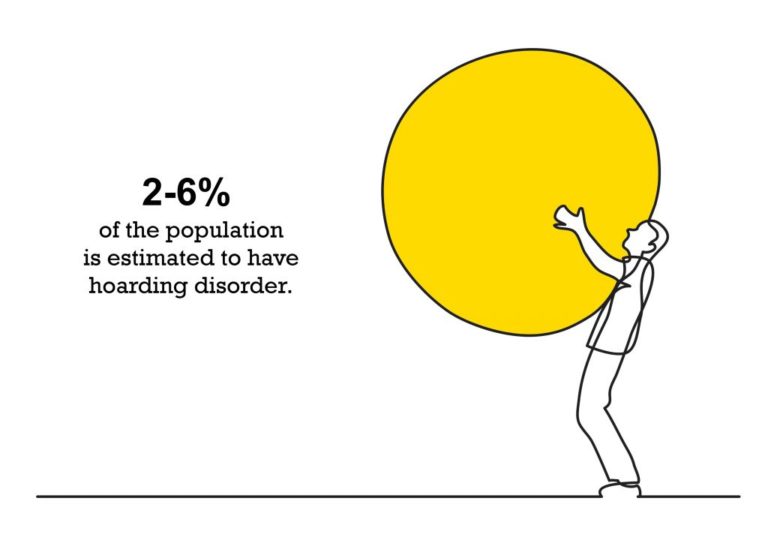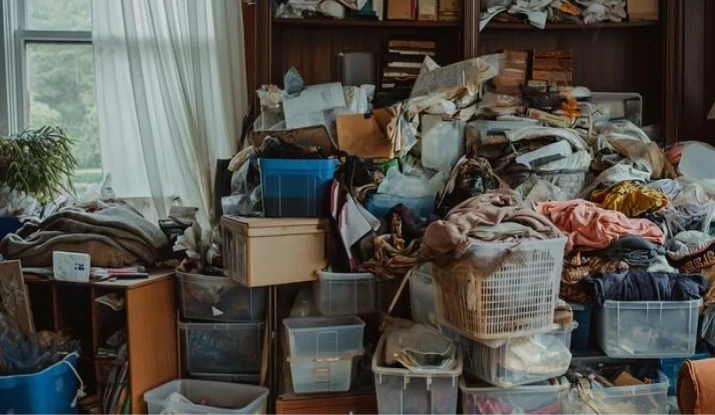Clutter is not just a dirty house; it is a result of several clinical conditions that lead to significant changes in people and their loved ones. Though general symptoms of hoarding may not be very difficult to spot, numerous other indicators may be overlooked easily.
These hoarding signs can be subtle, and identifying them is essential since they may represent a first step in acknowledging the issue and seeking assistance. Increased awareness of these hoarding signs is important for acquiring a kinder attitude towards hoarders.
Let’s succeed in identifying the ten most elusive signs of hoardings. Be it the piles of little signs or the emotional possessions that seem crucial even though they are not, these hoarding signs offer an understanding of the challenging ride that hoarders go through. These signs will help to develop knowledge and sympathy among people and persuade them to discuss hoarding problems more often.
What Defines Hoarding?
Hoarding refers to the accumulation of objects that have no practical uses, or at least not to the degree that it starts to interfere with the living environment and everyday functioning. People suffering from hoarding disorder find it difficult to discard items as they develop great sentimental value for the items. This can result in nasty and insecure living conditions, hence affecting one’s physical and even psychological well-being.
Interesting Facts to Know About Hoarding

Source: Professional Organiser
- Cluttering is regarded as a mental illness, and thus, it is included under the DSM-5 (Diagnostic and Statistical Manual of Mental Disorders).
- It is present in 2-6% of the population without regard to age, gender, color, or creed.
- It is often found to be present in combination with other mental disorders, including anxiety and depression.
- If not treated, hoarding may escalate, affecting the patient’s ability to socialize and sometimes causing emotional problems.
Ten Signs of Hoarding Disorder
Several signs indicate someone is becoming a hoarder. But how do you find them? Explore the below-mentioned common signs.
1. Excessive Clutter
Living spaces are full of an overwhelming amount of unnecessary products, making it extremely challenging to navigate through rooms and furniture.
2. They have a Shopping Obsession
People with hoarding addiction also have strange kinds of shopping habits. This allows them to add to their “collection” as much as they want. After some time, this results in hoarding and makes it difficult to manage.
3. Emotional Attachment
“What if I lose this item?” , “No, no, this was given to me as a gift”. Yes, we more often listen to these kinds of words, and people with hoarding habits have a strong emotional attachment to items that hold no practical value, such as old or broken jewelry.
4. Social Withdrawal
Hoarders often isolate themselves due to embarrassment or shame about their living conditions, leading to a decline in social interactions.
5. Indifference to Safety Hazards
Clutter can create a dangerous environment, yet individuals may overlook fire hazards or trip risks, focusing on their belongingness over safety.
6. Acquiring Items Uncontrollably
Many hoarders continuously acquire items, even when they have no use for them, often resulting in excessive purchases or free items.
7. Disorganization
Items or products are often stacked haphazardly, making it amazing to find anything or even see what is being kept.
8. Disregard for Living Space
Rooms may become so cluttered that they are unlivable, with bedrooms, kitchens, or bathrooms filled with items to the point of being unusable.
9. Family Conflict
Hoarding can lead to strained relationships with family members who may express concern or frustration about their living conditions.
10. Emotional Distress
Many hoarders experience feelings of shame, guilt, or sadness regarding their possessions and the state of their homes.
Tips for Hoarding Cleaning
That would be the best decision ever to seek a professional hoarding cleanup company to dispose of all the unnecessary items. Because they can help clear up and organize living spaces and assist in resolving deep emotional issues that are attached to the act of hoarding.
Moreover, they are trained to handle delicate situations with care and adopt a respectful approach to the cleanup process. In addition to physical cleanup, many companies also offer resources for mental health professionals who specialize in hoarding disorders.
So what are you waiting for? Take the first step towards hoarding cleanup; after all, it will lead to a healthier and happier living environment.
Conclusion
Hoarding is a complex and more often misunderstood condition that can significantly impact individuals and their families. By identifying the above-hidden signs of hoarding, we can foster understanding and compassion for those affected.
Whether it’s through seeking professional help or offering support to a loved one, addressing hoarding is essential for reclaiming a safe living space. If you are struggling with a hoarding situation, don’t hesitate to contact us. We encourage you to build a healthy and happy space for yourself and your family members.
Take the first step toward a clutter-free home with our professional hoarding cleanup services



